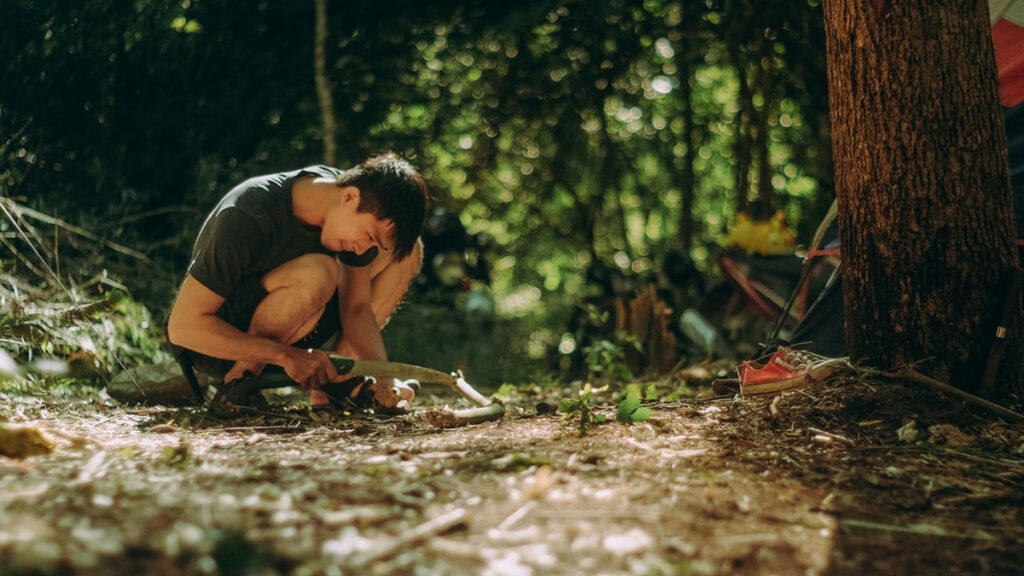
The lines between bushcraft and preppers is always a bit blurred, but one thing is certain preppers can learn from bushcrafters, like what bushcraft tools preppers should own.
The goal of prepping is to be prepared for when SHTF, and in order to increase survivability, you have to have an idea of what SHTF situations you prepping for, what you plan to do in each of those scenarios whether it’s bugging-out or bugging-in.
Are prepping for a short time natural disaster? Or the long-term drawn-out effects of an EMP blast? The situations you can prepare for are many and varied, and the more you know and prepare for gives you additional options and increases your chances of survival. One element of preparedness is in wilderness survival (bushcraft) and bushcraft tools.
I’ve compiled a list of 7 important bushcraft tools you’ll want either for general post-apocalyptic purposes around your house/bug out location or if you are bugging out into the woods. Each tool will boost your chances of survival by helping you meet the 4 pillars of survival:
- Water
- Fire
- Food
- Shelter
And for the sake of clarity, I will be defining SHTF as any scenario where the social structure and infrastructure is either impaired or destroyed and where self-sufficiency is the best chance for survival.
9 Bushcraft Tools for WTSHTF
S has HTF many times over the course of history and it will happen again. Society today is on the verge of going belly up as it is. So, unless you have mystical powers or a genie in a bottle, prepping is your best bet for survival.
Here is my list of 9 basic-level bushcraft tools every prepper needs to have on-hand and have a basic understanding of how to use them.
1. Fixed Blade Knife
A good knife is reliable and versatile, invaluable in the field. Best suited for light to medium field duty, with a knife you can carve, whittle, skin animals, make snares, create and set traps, and strike fire starters.
Knife Maintenance
To consistently get optimal use from your knife you have to maintain it. Moisture here is your enemy. Keep the blade dry and store in a sheath in an area of low humidity and cool temps.
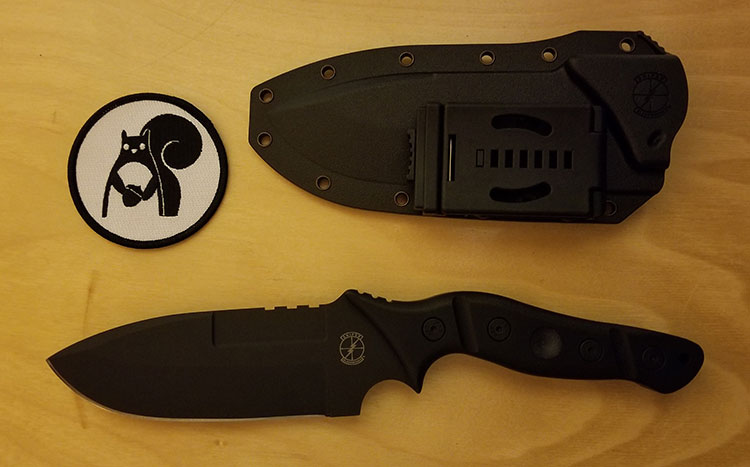
Keep your blade clean. The combination of weather and fingerprints can wreak havoc on the blade, so you need to regularly clean it. Use a mild solution of soap and water with a clean rag and let it dry.
Finally, always remember a sharp knife is a happy knife, you don’t want a knife that doesn’t cut, so after extended use inspect the blade and sharpen as needed. Many knife enthusiasts use a sharpening stone to keep the blade as sharp as possibly. To do it well, however, you need more than one. Sharpening stone are like sandpaper, they come in different grits.
Following are some recommended sharpening stones. Those from Knife Country cost less, but those from Amazon have two sides with two different grits.
| Sharpening Stone | Purchase Link |
|---|---|
| 120 Grit | Knife Country or Amazon |
| 320 Grit | Knife Country or Amazon |
| 600 Grit | Knife Country or Amazon |
| 1500 Grit | Knife Country or Amazon |
Practice on cheaper knives to get the technique before moving on to the more expensive ones.
Note: A basic fixed-blade knife should work and be widely available everywhere, but it can’t hurt to check the knife laws in your state.
2. Ax or Hatchet
Ah yes, the ax. The bane of many woodland forests. Small, highly versatile and a great non-precision wood cutting tool. They are efficient for tasks like chopping down trees, chopping firewood, butchering large animals, digging, hammering in stakes, and building wilderness survival shelters.
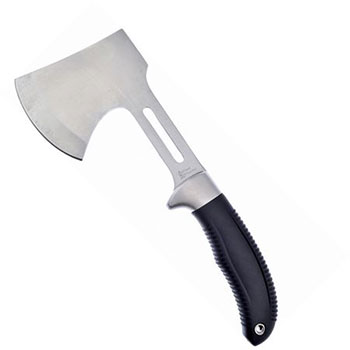
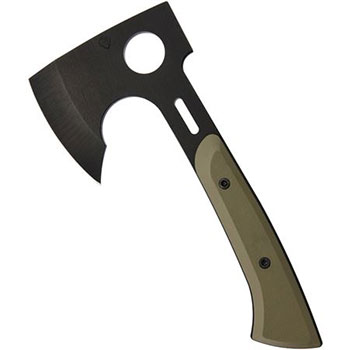
You can buy a hatchet for as little as $13 to as much as $350, so there is truly a hatchet to meet every need and every budget.
Ax Maintenance
Like its knife counterpart, keep your ax and hatchet heads dry and clean. Soap and water here may not cut it, so use turpentine to remove any stubborn dirt or wood sap from the head and handle. And in the incase you spot rust, use 000 steel wool to remove it.
Here are some ways to keep rust away from your ax:
- Spray or wipe the head and handle with light lubricants or oils. They tend not to gum up even in cold temperatures.
- Gun oil, as a cleaner and anti-rust protector.
- Motor oil to clean, protect and lubricate.
- Car or floor wax can inhibit rusting placing a waterproof barrier on the tools.
- Some old timers use beeswax or linseed oil to prevent rust on axes by putting a waterproof barrier on the tools.
Always store these tools in a safe, cool, and dry place of low humidity. Keep in a sheath when put away.
3. Machete
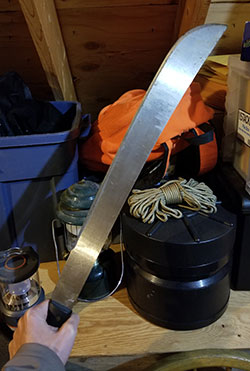
A wonderful heavy bladed tool for clearing branches, chopping smaller logs, or (in a pinch) digging. Some are even sickle-hooked for removing vines. Machetes are great for medium field use, easily accomplishing the lighter tasks of hatchets and axes. In some countries, machetes are even used as offensive or defensive weapons when firearms are otherwise unavailable.
There are an insane number of different machetes available, machetes that make mine look like a cheap piece of Chinese junk… which it might be now that I think about it.
Machete Maintenance
Keep your machete clean and oiled. Never soak it in water. Clean using soap solution and a clean rag, then allow to dry.
Oil the blade and all metal parts. Keep your machete sharp with a sharpening stone or metal files. In case you are not planning on using the machete for a while, store in sheath and place in a cool dry spot.
4. Hand Saw
The saw, a perfect tool to manipulate your surroundings to your advantage. Specifically made to cut through wood, this tool is invaluable for projects like building platforms, huts, shelters and storage units.
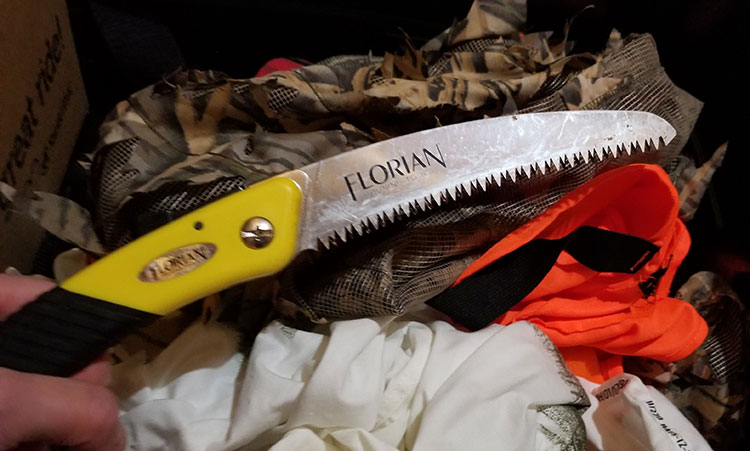
The small Florian folding saw I own is great because it’s 1) exceptionally sharp, 2) folds up to protect the blade from damage to the teeth and damage to you and your gear, and 3) weighs very little. A comparable saw can be had for around $17.00.
Saw Maintenance
Inspect the blade! This is paramount. Check all of the teeth for cracks, bends, or missing teeth all together. A damaged blade is a risk because of its increased chance of breaking.
Clean your saw after every use. The sap and debris from the wood dull the cutting surface. Soap and water may be ineffective. Many users use alcohol to clean their saws or a little kerosene on a rag to cut through all the gunk on the cutting edge.
Spot of rust can be removed by sandpaper or 000 steel wool. When not in use, make sure your saw is cleaned, oiled, and stored out of the way.
5. Small Shovel
What was once just a simple tool has now evolved into one of the most important and versatile pieces of equipment you can have in your vehicle bug out bag. It doesn’t have to be a full on tactical shovel (though those are nice), but a shovel is a necessity nevertheless.
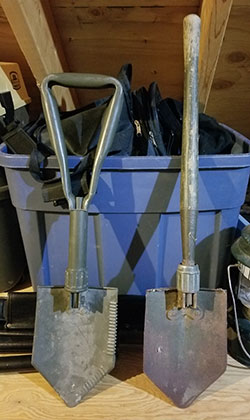
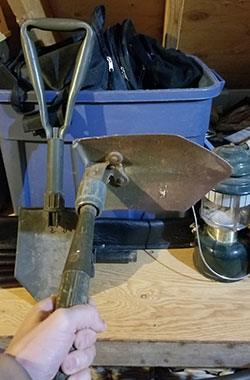
The ones I own and use (pictured above) have taken a beating over time. Not a survival purpose, but the most use they have seen is actually digging at the beach with the kids. They fold up neatly to carry with a cooler, and the folding blade feature makes digging a whole lot easier in a confined hole.
The tri-fold shovel (left above) can be purchased in different qualities from under $20.00 around to about $35.00.
The small shovel is one the best tool you’ll have on hand when you’re building a backwoods shelter. This means that a good shovel boosts your chances of survival, while a lack of one (or even a bad one) will screw you over.
The best survival shovels don’t just dig. They can act as axes, hammers, knifes, combat weapons, etc. (back on that tactical shovel). They are also very compact and strong.
What to look for in a survival shovel:
- Durability, always check the materials used to make the shovel and its build quality.
- Weight and Portability, since you will be carrying the shovel into the forest (theoretically), choose a relatively lighter shovel to save energy. Also, in order to save space, go for the smallest shovel without sacrificing strength and quality.
- Versatility, go for the multi-purpose shovels. Some even come with fire starters and saws. Not that you should rely on those, but they are a welcome addition to your cache of tools.
- Cost, its always best to buy within your budget, however no need to buy sub-par equipment that will fail you when you need it the most. Build your budget around these items so to get the best quality without ruining your bank.
Clean your shovel by removing the obvious clumps of dirt then wash with a mild solution of soap and water allow to dry then oil it, with careful emphasis on the hinges.
6. Fire Starter Kit
Being properly equipped will be the difference between warmth, a nice hot meal and cold sadness – or worse, hypothermia.
There is an abundance of pre-made fire starter kits out here, each offering different ways to light a fire. But to ensure survival your kit has the tools needed to support several methods of fire starting, have multiple ways to start fire (see my recommendations).
7. Metal Pot
Ah yes, the metal pot, the hail in Hail Mary. Is it an actual bushcraft tool? Maybe not, but do I really need to state how important this is? You absolutely must have bug out bag cookware of some type.
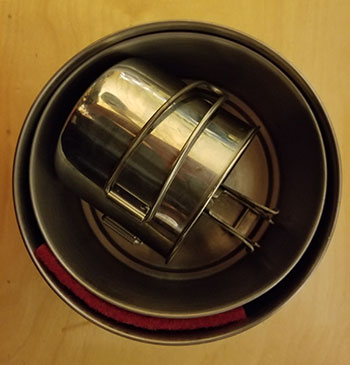
Aside from the obvious nutritional value of food, do not under-estimate the morale boost and the feeling of positivity that comes with a hot meal. But where are you going to cook it?
You’ll need a pot. A pot that is lightweight but can also take a few knocks without scratching or denting easily. Also, it should be a pot that you can put over a fire, so some heft here is important.
Here are a few options that can cover all these requirements:
- Stainless steel pots, highly recommended considered by many the best option. Its a little heavy and tough to clean, but its simple to use and can take a beating and no scratches.
- Titanium pots, very light, lightest of all. Extremely strong and corrosion resistant. Titanium transfers heat well.
- Aluminum pots, slightly lighter than titanium. Best for cooking but least durable.
The Primus Campfire Cookset is a stainless option that will suit the needs of many.
Things to note:
- Pots v. Cooksets, A single pot should suffice one person. A cook set for one person is extra weight which is not energy efficient.
- Lids, should be a snug fit for your pot with a little knob or tassel making it easy to lift. They can also double as frying pans in a pinch.
- Capacity, minimum recommended capacity is 600mil (about 20 oz.)
Bushcraft Tool Survival Summary
This is a list of items, but you must never forget or underappreciate knowledge.
Survival is not only about buying things in preparation for a doomsday scenario. The key to survival is coupling equipment with knowledge and experience. The more information you have, the more options you gain and with those you are able to adequately prepare for whatever scenario plays out.
You cannot buy skills. But you can accrue them over time. What is a bow and drill doing in your fire-starting kit if you don’t know how to use it? What is a fire if you don’t have food to put on it? Do you know how to hunt? Do you really know how to swing an ax, or will you split your foot in two instead? Do you know what herbs are edible in your area?
Consider these titles to expand your wilderness bushcraft know-how:
- The Bushcraft Boxed Set – a highly-reviewed, all-in-one set of bushcraft manuals.
- The Practical Bushcraft Survival Guide – includes a section specific to building shelters.
- Primitive Technology: A Survivalist’s Guide to Building Tools, Shelters, and More in the Wild – highly rated with many illustrations and hardcover.
- The Ultimate Bushcraft Survival Manual – a book by Outdoor Life that is also highly rated.
All these bushcraft skills are crucial elements for survival. So, read and learn as many skills as you can, the amount of skills you gain today, will boost your preparedness to survive tomorrow. We are preppers, so let’s so let us use this time we have, so when SHTF we will be prepared.

3 comments
Sorry to sound nick-picky, but, I don’t think any one knife can do it all. If one is none and two is one is true, then it’s especially true for knives and fire-starting tools! For me a neck knife (and/or EDC folding pocket knife) and a large heavy knife/small machete (I prefer the Ka-bar Kukri machete) can do almost anything I need a blade to do. A Lansky multi-sharpener can keep a working edge on both blades. A large machete and/or axe are both heavier and more dangerous to use and only IMHO needed if you are building a log cabin. A good folding saw can do any light to medium wood cutting tasks as well as a hatchet and safer though they are harder to clean and sharpen. Pocket/wire saws are worthless! Folding shovels tend to break at the joint with hard use, and for me a all-metal garden trowel works well enough. If you require 1 gallon (128 ozs.) of water per day and you are boiling as your means of purifying the water, then using a 20 oz metal pot will require you to boil at least 7 pots per day, and you need something like a canteen to hold that potable water in! I carry at least a 2-quart S/S pot w/lid and 2 1-quart canteens. The size doesn’t matter so much because you can carry other essentials like lighters, tender, candles, scrubbing pad and (for me, at least) instant coffee and sugar, salt and pepper inside the pot! Lastly, you didn’t even touch on the tools for getting food or having/making shelter. I carry a basic fishing kit and 2 mouse and 2 rat traps and a book on wild edible plants for food procurement, and a 22LR firearm when possible. You don’t want to have to be uncertain as to whether thats an edible plant or not especially when you’re weak and perhaps a bit mentally foggy from lack of food. I carry at least a heavy poncho and a wool blanket for shelter though I will carry a lightweight tent (and plastic tarp) if weight isn’t an issue. Yes, I know many people think they can just make a shelter out of local materials, but this require time (often hours, whereas a tent can be set up in 5-10 minutes) and calorie-burning effort, and local materials can be hard to find and gather in many places.
Not nitpicky at all – welcome the feedback!
I could use a metal pot, small shovel, fire starter kit, machete, hand saw. You could add a multi-tool or swiss army knife…can be used for moving the metal pot off and on the fire and other stuff